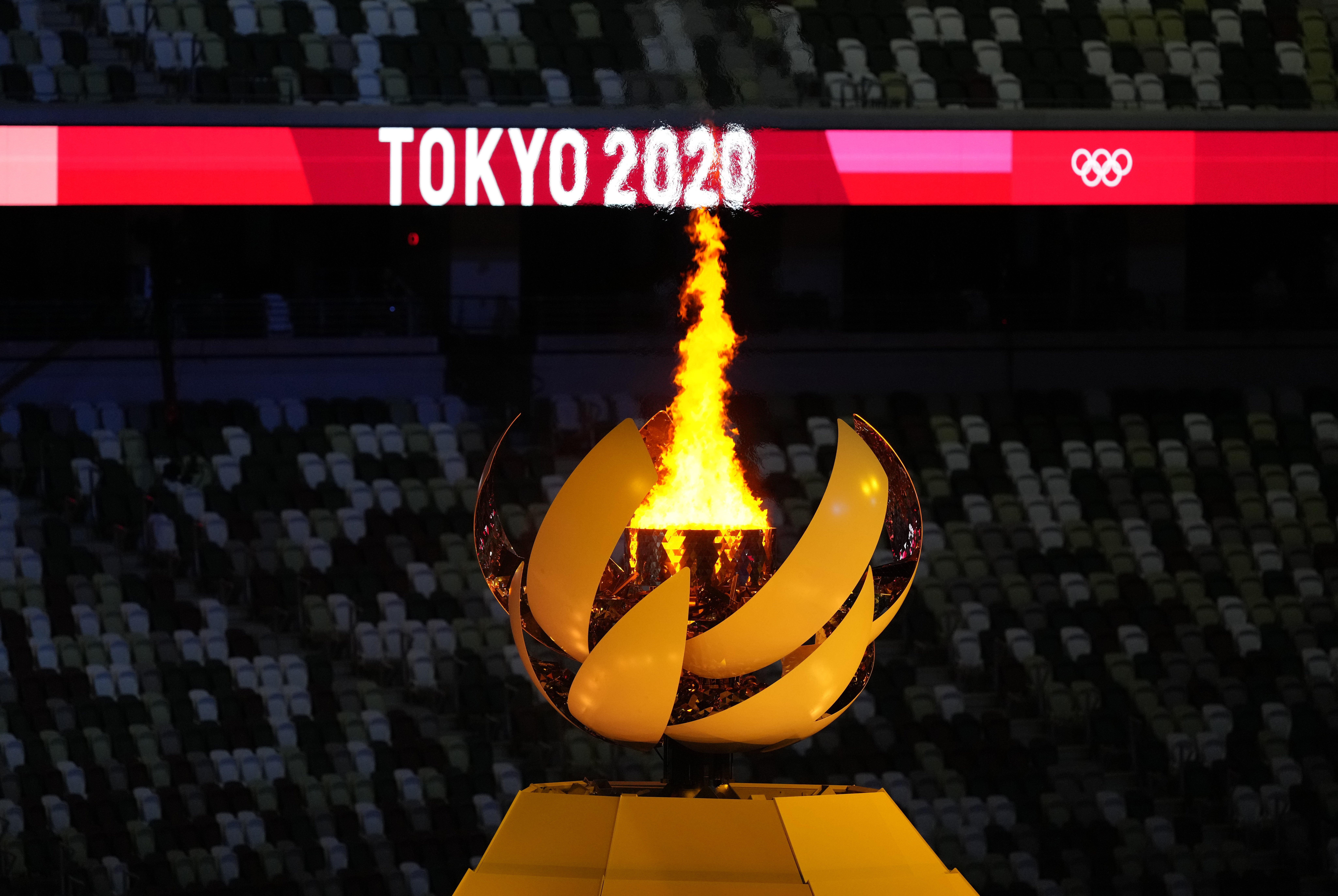Naomi Osaka lights Olympic flame after understated opening ceremony in Tokyo
International Olympic Committee president Thomas Bach declared the ceremony “a moment of hope”.

Tennis star Naomi Osaka lit the Olympic flame as the Tokyo Games were opened with an understated ceremony held behind closed doors.
The culmination came as great Japanese athletes, key workers and children from regions affected by the devastating earthquake and tsunami 10 years ago linked up before handing the flame to four-time grand slam champion Osaka.
The 23-year-old walked across the stage at the Olympic Stadium and climbed a symbolic depiction of Mount Fuji to light the cauldron.
Earlier, International Olympic Committee president Thomas Bach had addressed the athletes media and dignitaries that made up the sparse crowd, saying: “Today is a moment of hope.
“Yes it is very different from what all of us had imagined. But let us cherish this moment because finally we are all here together. This is the unifying power of sport. This is the message of solidarity, of peace and the message of resilience.”
The ceremony has had plenty of troubles irrespective of the wider backdrop of the coronavirus pandemic. Earlier this week, the show’s director, Kentaro Kobayashi, was sacked over alleged anti-Semitic jokes he made during a comedy routine in 1998.
That followed the resignation of composer Keigo Oyamada after footage emerged of interviews in which he admitted bullying disabled childrenduring his schooldays, while executive creative director Hiroshi Sasaki stepped down in March following criticism of his suggestion that plus-size model Naomi Watanabe dress up as a pig.
The stadium was surrounded by a ring of steel beyond which Japanese fans who had hoped to be on the inside had to make do with taking pictures of the Olympic rings and watching ticket-holding journalists walk through the security check points.
Protestors against the holding of the Games, meanwhile, marched outside the arena and could be clearly heard during quiet moments in the ceremony.
There were plenty of those, of course, with only a smattering of journalists, dignitaries and volunteers sat in the stands of the stadium, which was built for the Games on the site of the 1964 arena.
One of the most striking moments of the ceremony came with the construction of the Olympic rings, which were carved out of wood from trees grown from seeds carried by participants in the Games in the same city 47 years ago.
This was very much a ceremony for its time, with the early sequences referencing the effects of Covid-19 as athletes were seen training apart but connected, while there was a moment of silence to remember those lost.
The choreographed displays were pared back and understated, and the parade of athletes featured noticeably smaller delegations than normal, although some countries, especially the USA and Japan, were very well represented.
The British delegation, led for the first time like all the nations by joint male and female flag bearers in sailor Hannah Mills and rower Mohamed Sbihi, consisted of just 22 people.
Sbihi, the first Muslim athlete to carry the British flag at an opening ceremony, said: “It’s amazing to be able to share it with the select few we have here, to share it with Hannah. It is just a huge step towards equality and inclusion.”
Well-oiled internet sensation Pita Taufatofua carried the Tonga flag for a third successive Games after his starring role in Rio and Pyeongchang.
Organisers allowed themselves one real wow moment when nearly 2,000 drones formed a blue and white globe hovering above the stadium, and the tone became lighter towards the end.
An impressive sequence featured three people acting out all the different sports in pictograms before a celebration of Japanese landmarks and culture building up to the final showpiece.